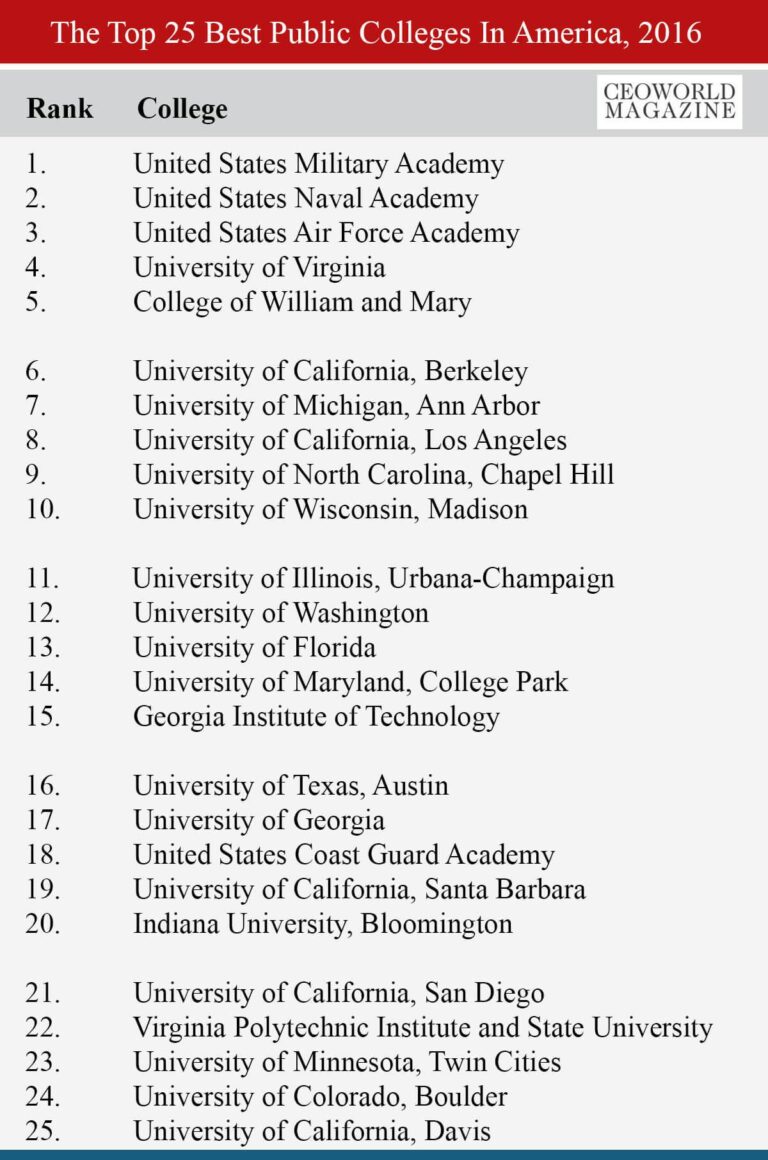Leading Public Universities in the U.S.: Excellence, Affordability, and Innovation
Public Universities Excelling in Academics and Cost Efficiency
In today’s competitive educational landscape, public universities in the United States are increasingly recognized for their ability to merge high academic standards with affordable tuition. These institutions offer students a rich blend of comprehensive degree programs, cutting-edge research opportunities, and vibrant campus life—all while keeping costs manageable compared to private counterparts. By emphasizing student achievement through innovative teaching methods and extensive support services, these universities make quality higher education accessible to a broad and diverse student body.
Several universities stand out for their impressive graduation rates, strong academic offerings, and cost-effectiveness. Their commitment to faculty excellence and modern facilities fosters an environment conducive to intellectual and personal growth. Below is an overview of some of the nation’s top public universities that exemplify this balance:
| Institution | Average In-State Tuition | Distinguished Programs | Graduation Rate |
|---|---|---|---|
| University of California, Berkeley | $15,000 | Engineering, Business, Computer Science | 92% |
| University of North Carolina at Chapel Hill | $9,000 | Public Health, Law, Journalism | 89% |
| University of Florida | $6,380 | Agriculture, Health Sciences, Business | 88% |
| University of Texas at Austin | $11,500 | Business, Engineering, Fine Arts | 85% |
By offering competitive tuition rates alongside rigorous academic programs, these universities exemplify the potential of public higher education to deliver exceptional value. Their role in cultivating the nation’s intellectual resources remains indispensable, as they continue to expand access to premier education.
Career Development Initiatives Driving Graduate Employability
Many leading public universities prioritize career readiness, providing students with extensive resources that extend well beyond classroom learning. These campuses have developed sophisticated career centers that offer personalized guidance, internship placements, and strong connections with employers. Through tailored mentorship programs, exclusive job fairs, and active alumni networks, students gain a competitive edge in the job market. Impressively, several institutions report graduate employment rates surpassing 90% within six months post-graduation.
Incorporating advanced tools such as AI-powered job matching platforms and virtual career workshops, these universities enable students to engage with recruiters and industry professionals globally. The following table highlights select public universities and the distinctive career services that contribute to their graduates’ success:
| University | Career Services Features | Graduate Employment Rate |
|---|---|---|
| University of Michigan |
|
92% |
| University of California, Berkeley |
|
90% |
| University of Virginia |
|
91% |
Cutting-Edge Programs Fostering Industry Collaboration and Research
Across the country, public universities are pioneering innovative programs that bridge academic research with industry needs. These initiatives provide students with invaluable experiential learning while driving advancements in fields such as sustainable energy, artificial intelligence, and advanced materials science. Collaborations with leading corporations and emerging startups create vibrant innovation ecosystems, ensuring graduates are equipped with skills aligned to evolving market demands.
Core elements of these initiatives include:
- On-campus innovation hubs and startup incubators supporting entrepreneurial ventures
- Interdisciplinary research centers promoting collaboration across diverse fields
- Industry advisory panels shaping curricula to reflect current and future workforce needs
- Robust internship and cooperative education programs linking students with top employers
| Program | Industry Partner | Focus Area | Annual Research Funding (Million $) |
|---|---|---|---|
| Advanced Materials Research Lab | NanoTech Solutions | Nanotechnology | 8.5 |
| Data Science Partnership | Insight Analytics | Artificial Intelligence | 6.2 |
| Renewable Energy Initiative | EcoPower Corp | Sustainable Energy | 9.0 |
Enhancing Student Experience Through Comprehensive Support Services
Beyond academic rigor, these universities are renowned for fostering inclusive and supportive campus environments that nurture student well-being and success. A wide array of services—including mental health counseling, academic tutoring, and career development workshops—ensure students receive holistic support throughout their educational journey. Modern recreational facilities and active student organizations further enrich campus life, promoting leadership development and community engagement.
Highlighted below are key support services that significantly contribute to student achievement and satisfaction:
- Mental Health Support: Access to licensed counselors, peer-led support groups, and mindfulness initiatives.
- Academic Resources: Round-the-clock tutoring centers, writing assistance, and study skills seminars.
- Career Development: Resume workshops, internship coordination, and employer networking events.
- Inclusive Campus Culture: Diversity and accessibility offices, cultural organizations, and equity programs.
| Service | Availability | Impact on Student Outcomes |
|---|---|---|
| Peer Mentorship Programs | Year-round | Boosts retention rates by 12% |
| Career Fairs | Twice annually | 75% job placement within six months |
| Tutoring Services | Daily | Average GPA improvement of 0.5 points |
Conclusion: Shaping the Future of Accessible and Impactful Education
These distinguished public universities continue to redefine the standards of higher education by combining affordability, academic rigor, and innovative practices. Their dedication to serving diverse student populations and fostering regional economic development positions them as vital pillars in the educational ecosystem. For students, educators, and policymakers alike, recognizing the strengths and contributions of these institutions is crucial for advancing accessible, high-quality learning opportunities nationwide.







